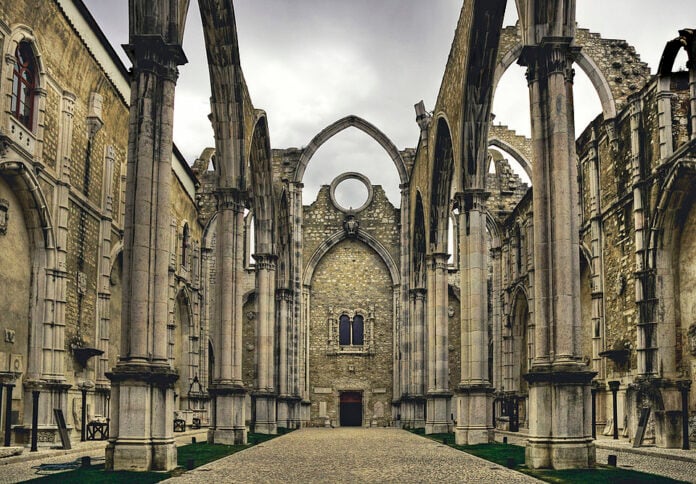Welcome to one of Lisbon’s most famous and historic neighborhoods, where enchantment pours out of every door. The Baixa-Chiado district combines the elegance of Pombaline architecture with the bohemian spirit of old Lisbon. It literally feels like a living museum as you walk around and wend your way through the narrow alleys, centuries-old churches, and into the very soul of Portuguese culture.
We’ve put together a self-guided walking tour so you can get to know this spirited neighborhood on your own time. We will begin and end in roughly the same place. Let’s begin!
Starting Point: A Brasileira – The Poets’ Corner
Allow 30 minutes
Begin your journey at the iconic A Brasileira, the legendary café that has been serving coffee since 1905. This Art Nouveau gem on Rua Garrett was once the beating heart of Lisbon’s intellectual scene. The bronze statue of Fernando Pessoa sitting at an outdoor table marks the spot where Portugal’s greatest poet held court with fellow writers and thinkers and makes for a cute photo opportunity.
Step inside to admire the ornate mirrors, gilded details, and the original roasting machine. Order a bica (espresso) and a pastel de nata while soaking in the atmosphere that inspired generations of Portuguese literature. The café’s name pays homage to Brazil and reflects Portugal’s deep colonial connections that shaped the nation’s identity.
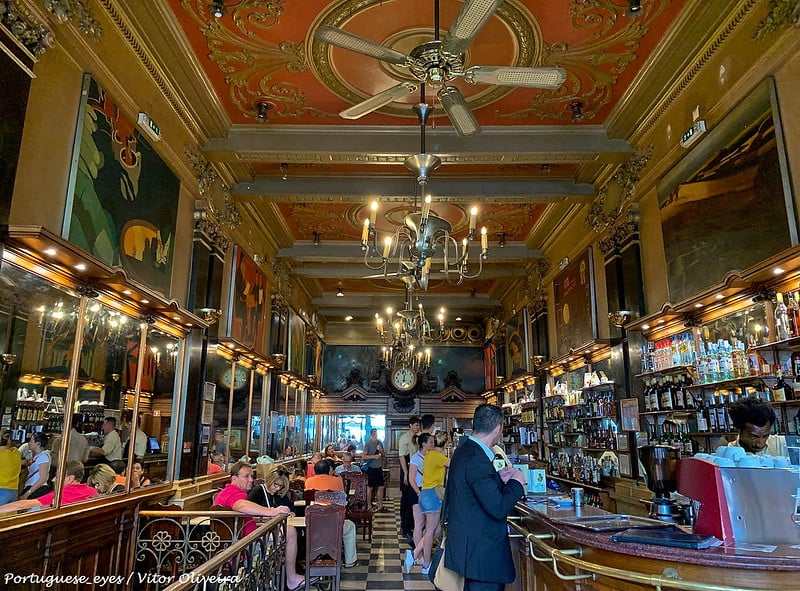
Livraria Bertrand – The World’s Oldest Bookstore
2-minute walk to Rua Garrett
Return to the heart of Chiado to visit Livraria Bertrand, officially recognized by Guinness World Records as the world’s oldest operating bookstore. Founded in 1732, this literary institution has survived the devastating 1755 earthquake, political upheavals, and the digital revolution.
The narrow aisles are packed floor-to-ceiling with books in Portuguese, English, and other languages. The bookstore is designed from front to back with the room numbers on the floor also telling you what to expect in each room. Famous writers like Eça de Queirós and Camilo Castelo Branco once browsed these same shelves, and today you can find everything from contemporary Portuguese literature to rare first editions. There is a lovely café in the very last room if your bica at A Brasileira wasn’t enough!
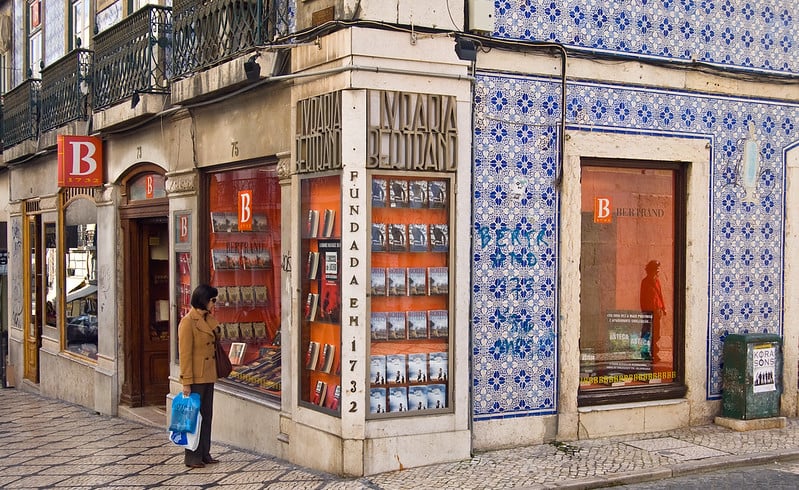
Church of Our Lady of the Loreto of the Italians
3-minute walk to Largo do Chiado
The Church of Our Lady of the Loreto of the Italians tells the story of Lisbon’s historic Italian community. Built in 1518 and rebuilt after the 1755 earthquake, this church has served Italian merchants, diplomats, and immigrants for over 500 years.
The intimate interior features Italian marble and artwork donated by wealthy Italian families. The church still conducts masses in Italian and maintains its role as the spiritual home for Lisbon’s Italian community. The baroque altar and the delicate frescoes create an atmosphere that feels more Mediterranean than Atlantic.
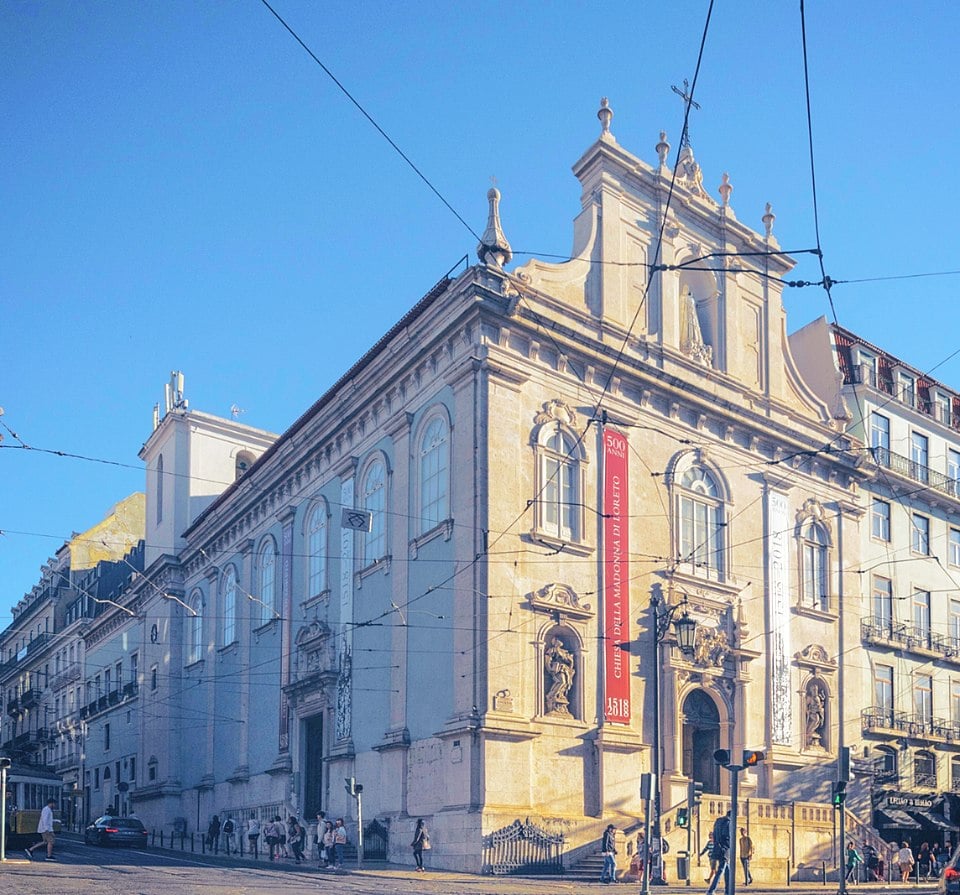
Basilica of Our Lady of the Martyrs
4-minute walk to Largo do Carmo
The Basilica of Our Lady of the Martyrs (Basílica dos Mártires) is a powerful testament to Portuguese resilience. Originally built to commemorate the Christian martyrs who died during the Moorish occupation, the current structure dates from the 18th century reconstruction following the great earthquake.
This church played a crucial role in Portuguese history. It was here that prayers were offered for the success of the 1974 Carnation Revolution that peacefully ended decades of dictatorship. The baroque interior features beautiful tile work and a stunning wooden ceiling that seems to float above the nave.
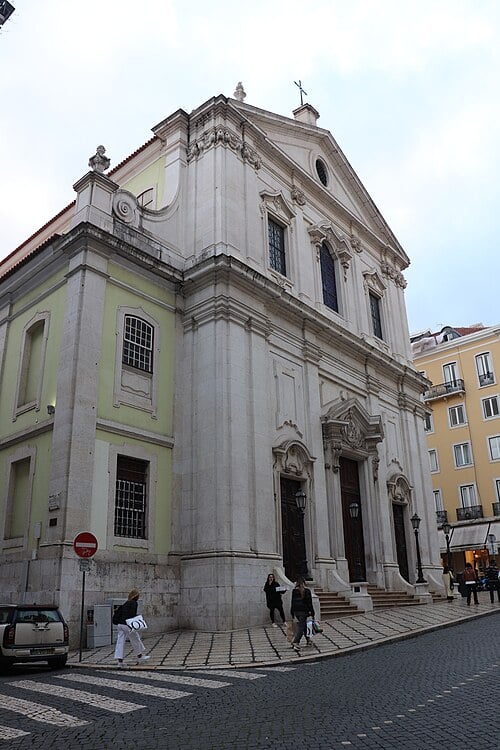
Carmo Archaeological Museum – Resilience in the Ruins
1-minute walk, Largo do Carmo
Speaking of resilience, here is Lisbon’s greatest example! The Carmo Archaeological Museum is housed in the hauntingly beautiful ruins of the Carmo Convent. The 1755 earthquake destroyed the roof and much of the structure, but the Gothic arches and walls remain as a powerful reminder of nature’s devastating force.
Walking through the roofless nave, open to the sky, creates a uniquely moving experience. The museum houses an eclectic collection of artifacts, including prehistoric tools, Roman mosaics, and medieval sculptures. The most fascinating exhibit is the collection of ancient mummies, including a Peruvian child mummy that draws visitors from around the world.
The peaceful cloisters, with their delicate stone tracery, provide a contemplative space where you can reflect on the impermanence of human achievement and the enduring power of faith. The Carmo rooftop shows outdoor summer movies right next door and the outdoor space under the roofless nave hosts a number of concerts throughout the year.
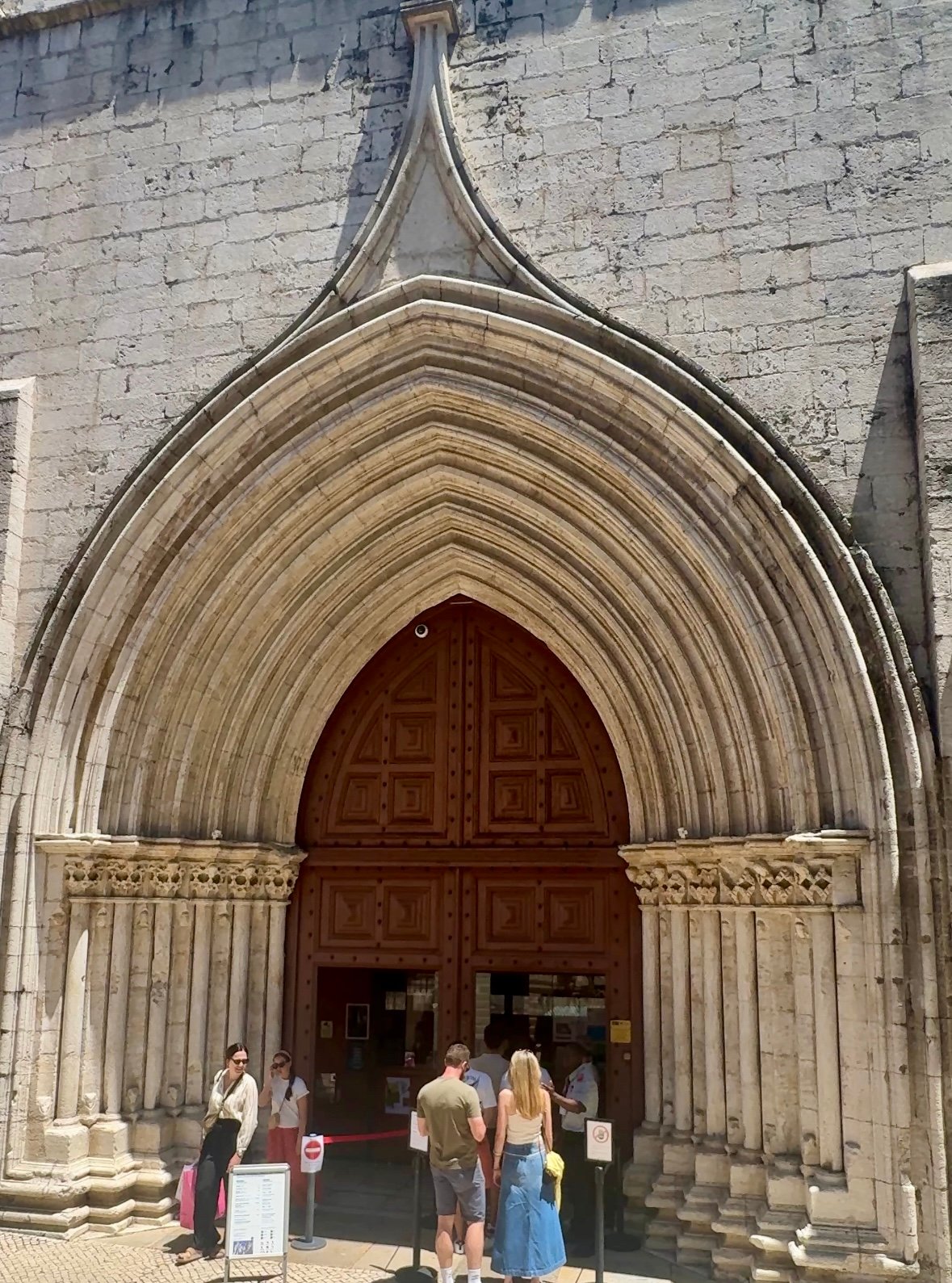
Church of the Blessed Sacrament – Get Ready for a Spectacular Ceiling
7-minute walk to Rua do Sacramento
The Church of the Blessed Sacrament (Igreja do Santíssimo Sacramento) houses one of Lisbon’s most breathtaking artistic treasures. While the exterior appears modest, the interior ceiling is a masterpiece of trompe-l’oeil painting that creates the illusion of an open sky.
Portuguese artist Pedro Alexandrino de Carvalho spent years creating this optical illusion, where the painted ceiling appears to extend infinitely upward. Stand in the center of the nave and slowly look up. The effect is so convincing that many visitors experience vertigo. The surrounding chapels feature intricate woodwork and religious paintings that demonstrate the wealth and devotion of 18th-century Portuguese nobility.
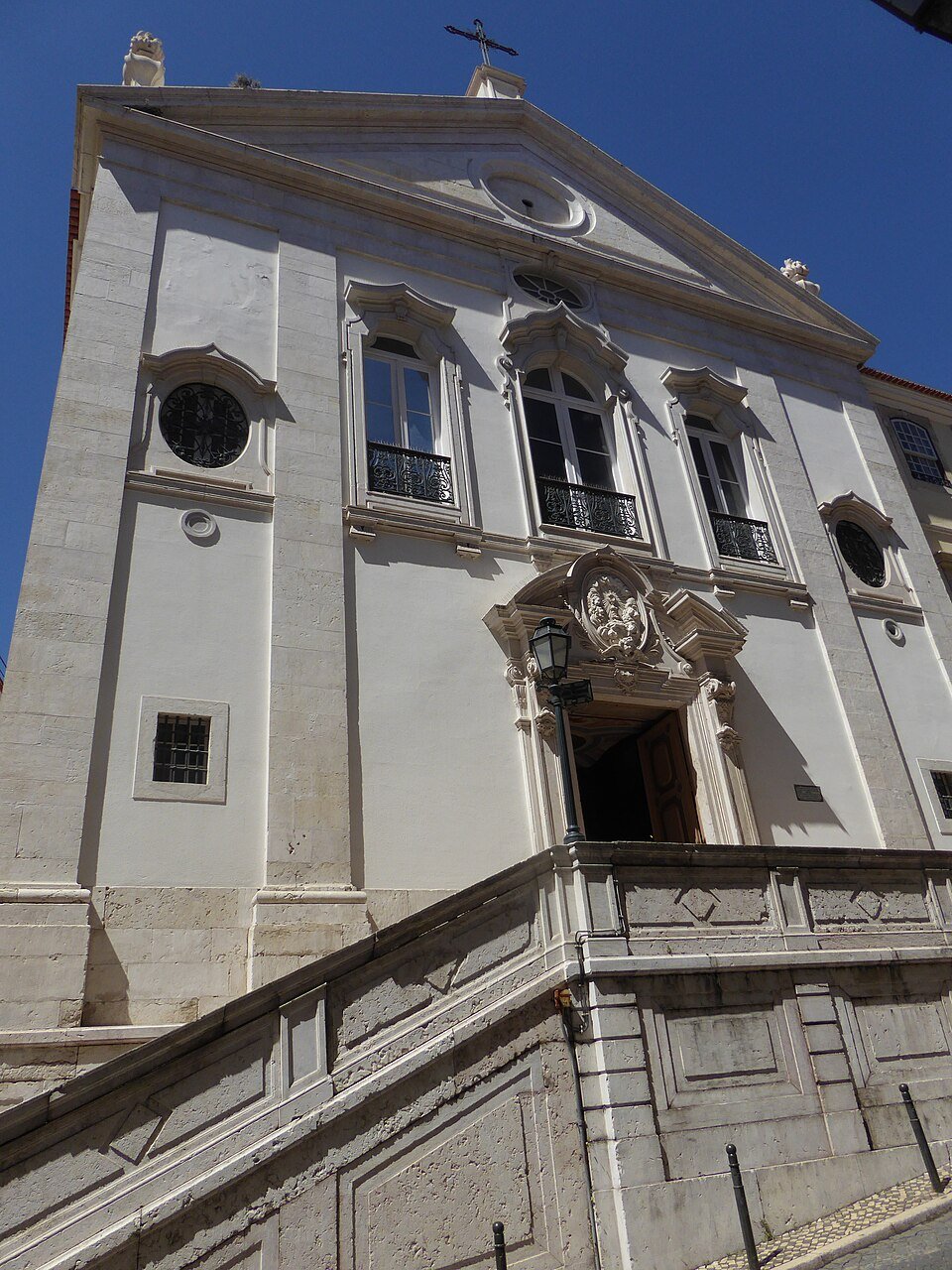
Church of Our Lady of the Incarnation
6-minute walk down Rua da Trindade
Continue your spiritual journey to the Church of Our Lady of the Incarnation (Igreja da Encarnação), a hidden gem renowned for its spectacular azulejo tiles. Built in the 17th century, this church showcases the finest examples of Portuguese ceramic artistry.
The blue and white tiles create a visual narrative of religious scenes that covers nearly every surface. The main altarpiece, carved from Brazilian jacaranda wood, gleams with gold leaf. Notice how the architects used optical illusions in the ceiling paintings to make the space appear larger than it actually is, a common technique in Portuguese Baroque design.

Church of Saint Roch – A Golden Opportunity
5-minute walk up to Largo Trindade Coelho
Our tour of Baixa Chiado’s churches culminates the Church of Saint Roch (Igreja de São Roque), a masterpiece of Portuguese Baroque architecture. Built by the Jesuits in the 16th century, this church survived the 1755 earthquake that devastated much of Lisbon.
The austere exterior gives no hint of the treasures within. Step inside to marvel at the Chapel of St. John the Baptist, considered one of the most expensive chapels ever built. Commissioned from Rome in the 18th century, it features precious stones, gold, silver, and bronze work that took six years to complete. The intricate azulejo tiles tell stories of Portuguese saints and biblical scenes. Keep on eye out for the levels of relics on both sides of the main chapel. You can also visit the Museum of the Church of Saint Roch to see more of the actual relics up close.
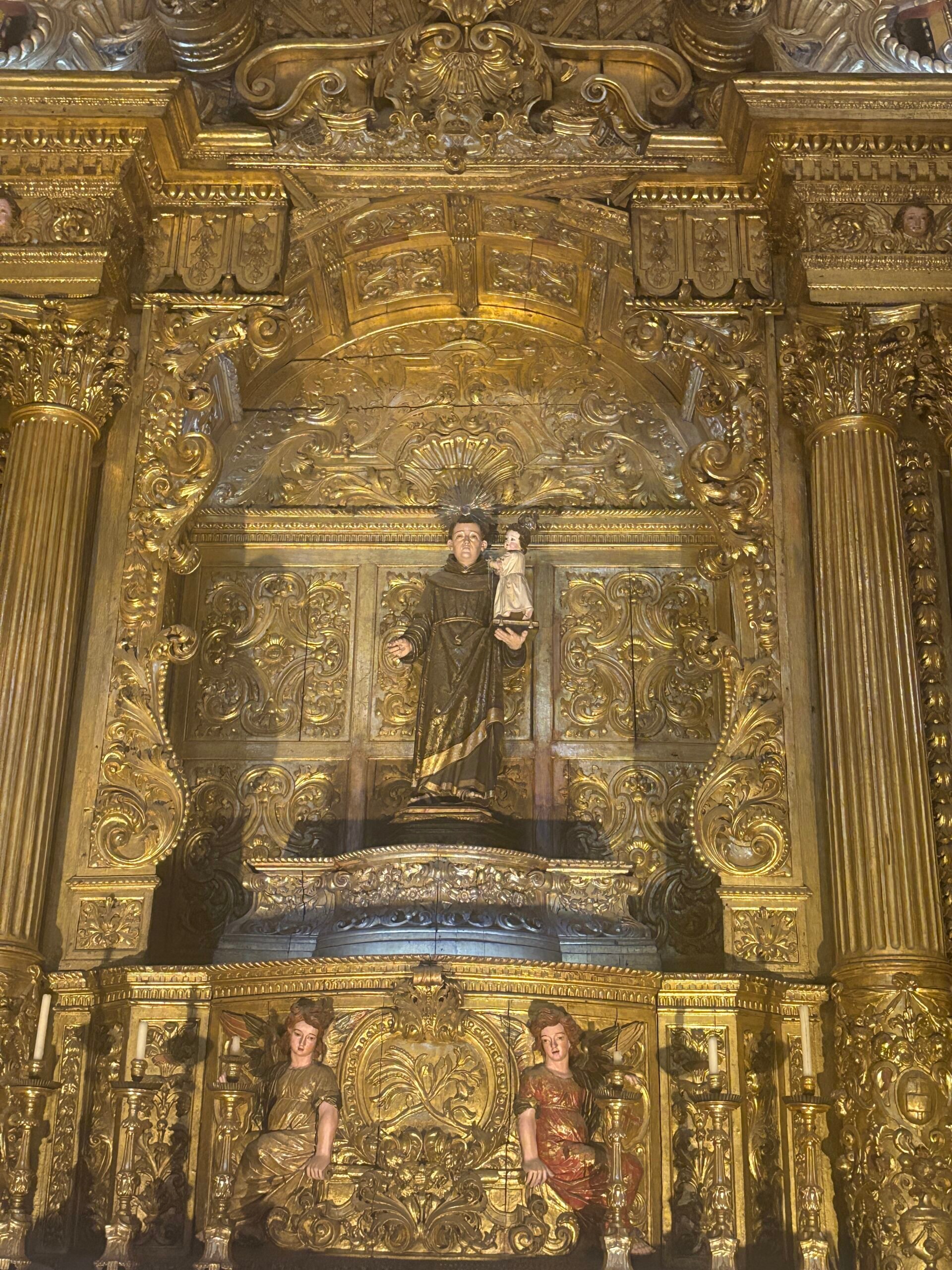
Brotéria – A Peaceful Coffee Stop in a Beautiful Building
Right next door to Church of Saint Roch
After the sensory overload of São Roque, go next door to Brotéria for a moment of peaceful reflection. This charming space, used as a library, study center, art gallery, and bookshop, among other things, is housed in a former Jesuit building. It is free to enter and offers something rare in Lisbon – a quiet back terrace garden where you can escape the crowds.
Order a coffee and a slice of homemade cake while sitting among the flowering plants in the shade. The café takes its name from a scientific magazine published by Portuguese Jesuits that has been publishing articles now for over 120 years! It is the perfect spot to journal about your discoveries or simply take a breather before continuing on our tour. Don’t eat much here because we have more food stops coming soon!
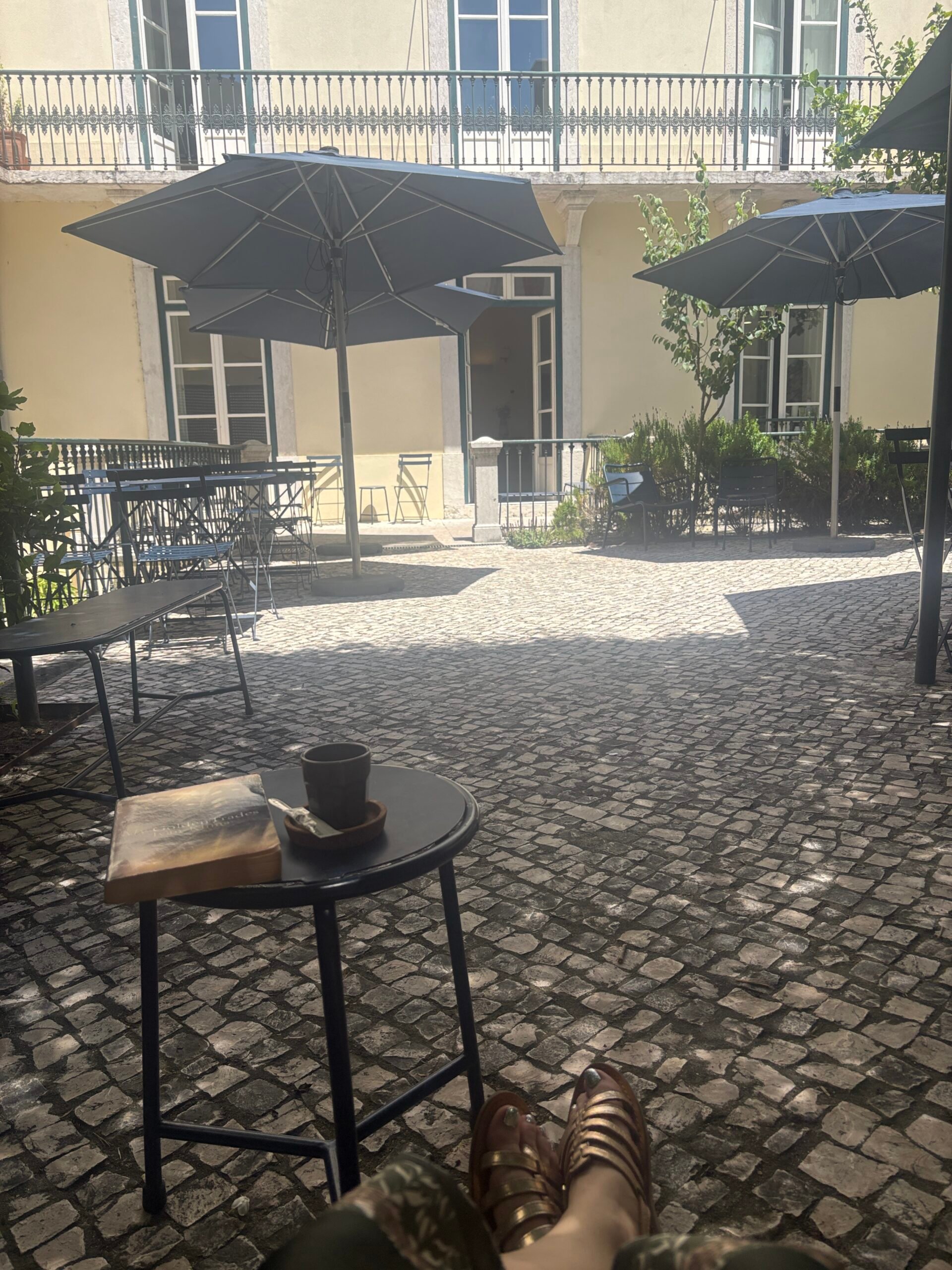
Cinema Ideal – Cute Independent Movie Theater
8-minute walk downhill to Rua do Loreto
Going back downhill toward Chiado, you’ll discover Cinema Ideal, a beautifully restored Art Deco movie theater that opened in 1950. With its original red velvet seats and ornate ceiling, it represents the golden age of Portuguese cinema.
The theater survived decades of decline and was lovingly restored to its former glory, complete with original 35mm projection equipment. Today it screens art films, documentaries, and classic Portuguese cinema. Even if you can’t catch a screening, peek inside to admire the vintage lobby with its geometric patterns and period light fixtures.
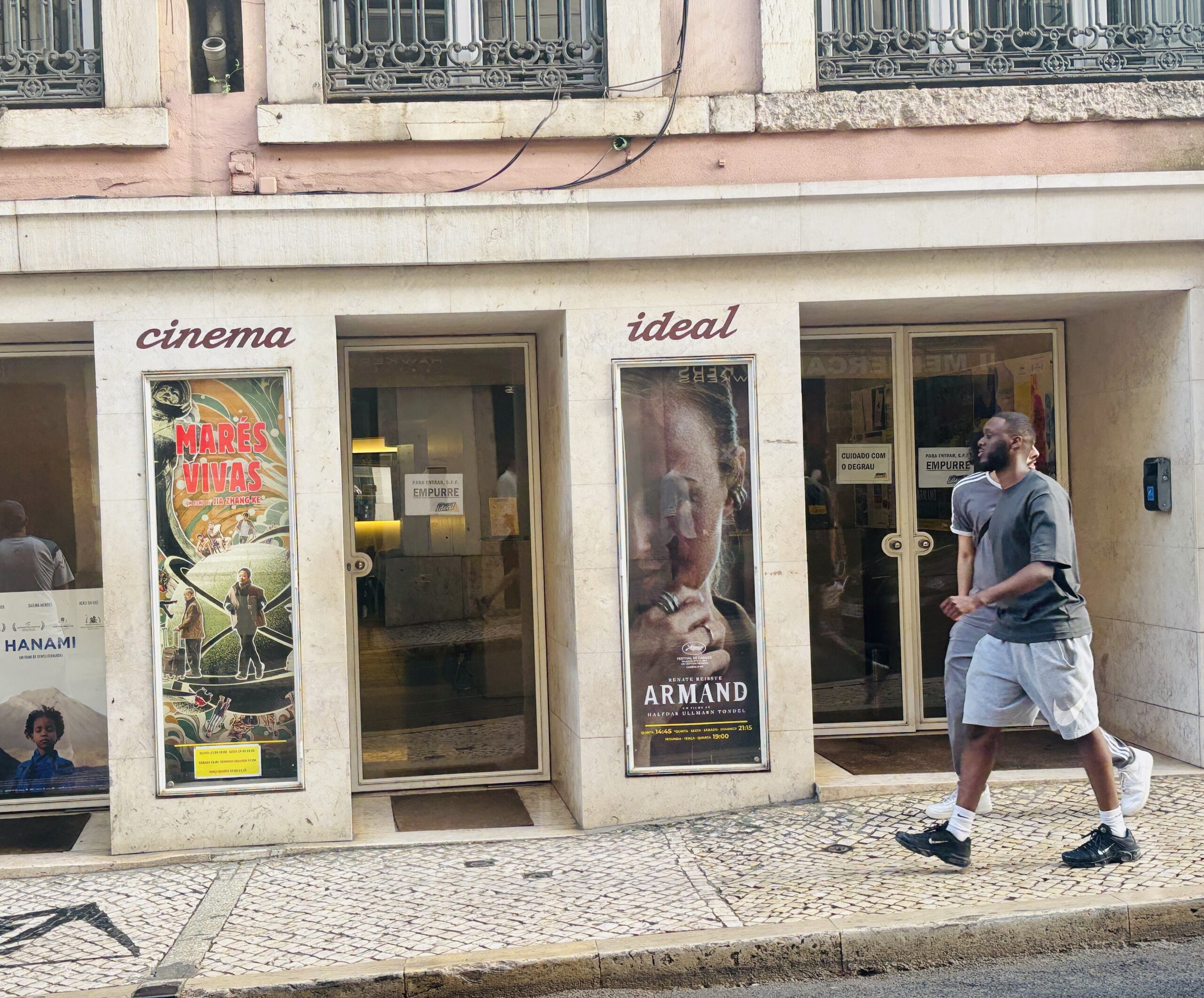
Casa das Velas Loreto – Lisbon’s Oldest Continuing Shop
2-minute walk from Cinema Ideal
Just a short stroll down Rua do Loreto brings you to Casa das Velas Loreto, a remarkable piece of living history. This unassuming shop holds the distinction of being Lisbon’s oldest continuously operating business and has been crafting candles for over 230 years! The same family has been keeping the flame alive since 1789, which makes it one of Europe’s oldest family businesses.
The tiny shop overflows with handmade candles of every size and color, from simple votives to elaborate church candles. The sweet scent of beeswax fills the air as you watch artisans work with techniques passed down from generation to generation. It’s a demonstration of Portuguese craftsmanship and family dedication that has survived revolutions, earthquakes, and modernity itself.

O Trevo – Following in Anthony Bourdain’s Footsteps
5-minute walk through Rua do Carmo
Navigate through the bustling pedestrian streets to reach O Trevo, a no-frills tasca that gained international fame when Anthony Bourdain declared it served one of the best bifanas (pork sandwiches) in Lisbon. This tiny establishment, barely larger than a closet, has been serving hungry locals since 1967.
The magic happens behind a simple counter where pork is marinated in white wine, garlic, and bay leaves, then grilled to perfection and stuffed into a crusty roll. Watch the controlled chaos as the owner assembles sandwich after sandwich with practiced precision. The walls are covered with photos of celebrity visitors, but the real stars are the regular customers who’ve been coming here for decades.

Manteigaria – The Best Pastel de Nata (Don’t Tell Pastéis de Bélem)
1-minute walk from O Trevo
One minute down the street from O Trevo brings you to Manteigaria, where you’ll witness the art of pastel de nata making through floor-to-ceiling windows and make the perfect dessert stop! This bakery chain has perfected the ancient recipe for Portugal’s most famous pastry using traditional methods in a contemporary setting.
Watch the bakers roll paper-thin pastry, fill delicate molds with custard, and slide trays into blazing ovens. The result is a crispy, flaky shell filled with creamy custard that’s slightly caramelized on top. Enjoy one warm with a shake of cinnamon and powdered sugar while it’s still crackling from the oven. “Manteiga” means “butter” in Portuguese and it is the sweet buttery taste of the pastel de nata that we believe (dare we say it!) is even better than Pastéis de Belém.
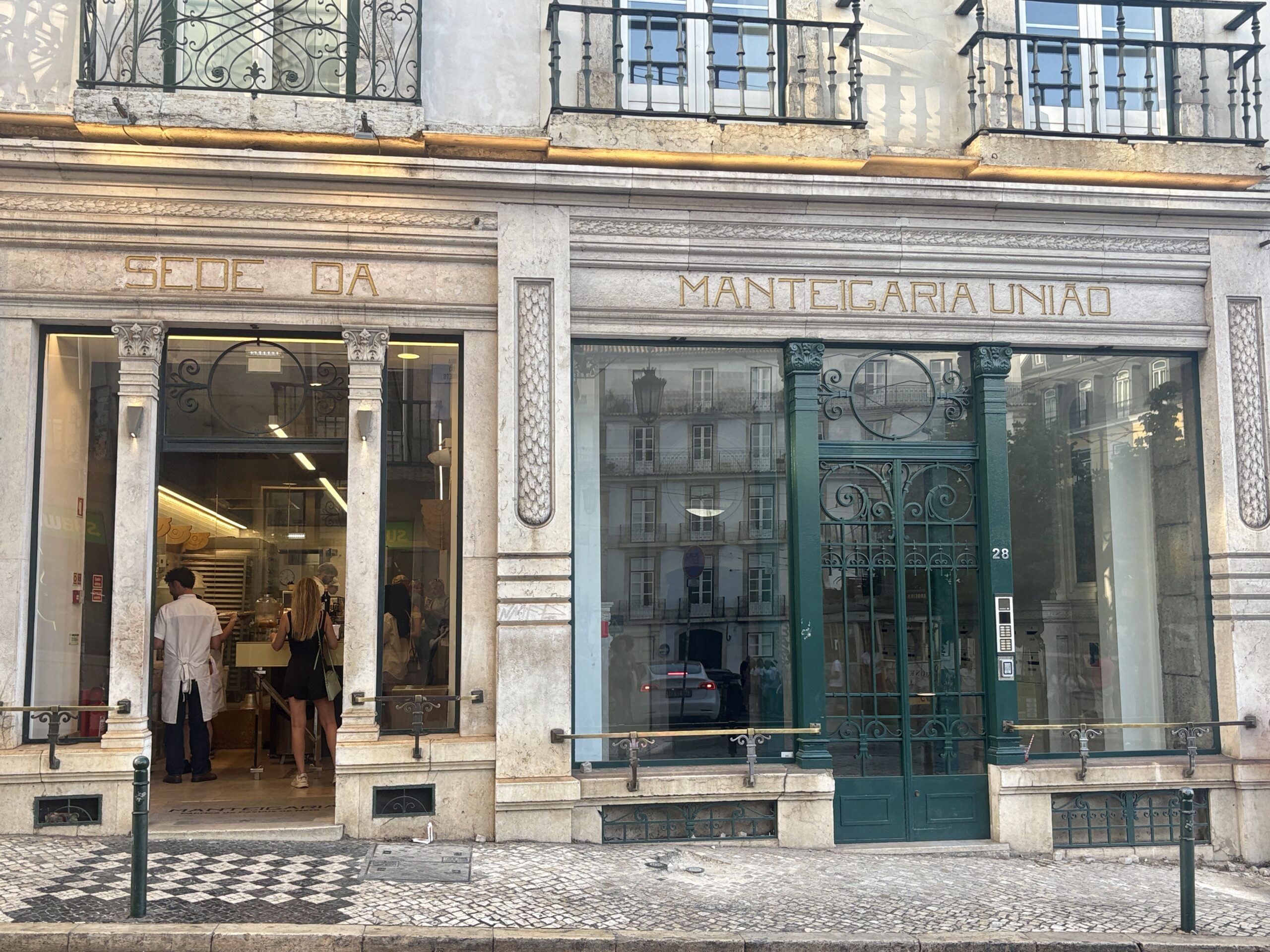
A Tasca do Chico – Fado Dinner Finale
4-minute walk back up to Rua do Diário de Notícias
End your historic journey at A Tasca do Chico, one of Lisbon’s most authentic fado venues. This tiny tavern, barely large enough for a dozen tables, has been serving traditional Portuguese food and hosting impromptu fado performances since 1985.
The walls are covered with fado memorabilia, old photographs, and handwritten lyrics. Order traditional dishes like chouriço assado (grilled sausage), queijo da serra (mountain cheese), or linguiça (spiced sausage) paired with a glass of Portuguese wine. As the evening progresses, local fado singers often arrive spontaneously to perform this uniquely Portuguese art form.
Listen to the melancholic melodies that speak of saudade, that untranslatable Portuguese word meaning a deep emotional state of longing for something absent. The intimate setting, with singers performing right next to diners, creates an authentic connection to the Portuguese soul that no concert hall can replicate.
One final thing: it is best to get reservations to Tasca do Chico and it doesn’t open until 7:00 PM. Please plan accordingly!
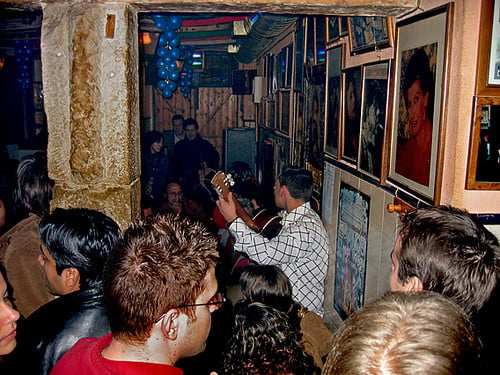
Practical Tips
- Churches are typically open 9 AM – 5 PM
- Restaurants open for lunch at noon, dinner at 7 PM
- Tasca do Chico opens at 7 PM
- Bring comfortable shoes (no heels or flip flops!)
- Do not wear a hat inside any of the churches!
Take your time, talk to locals, and allow yourself to get pleasantly lost in the narrow streets. Sometimes, the most beautiful discoveries happen when you’re not looking for them.
How did you enjoy the tour? Let us know in the comments!
Extend Your Tour
Want to discover even more of Lisbon? Check out these tours!
Heart of Lisbon Food Tour: Baixa, Chiado & Bairro Alto
Lisbon Fado Experience: Walking Tour, Dinner and Live Music Show

